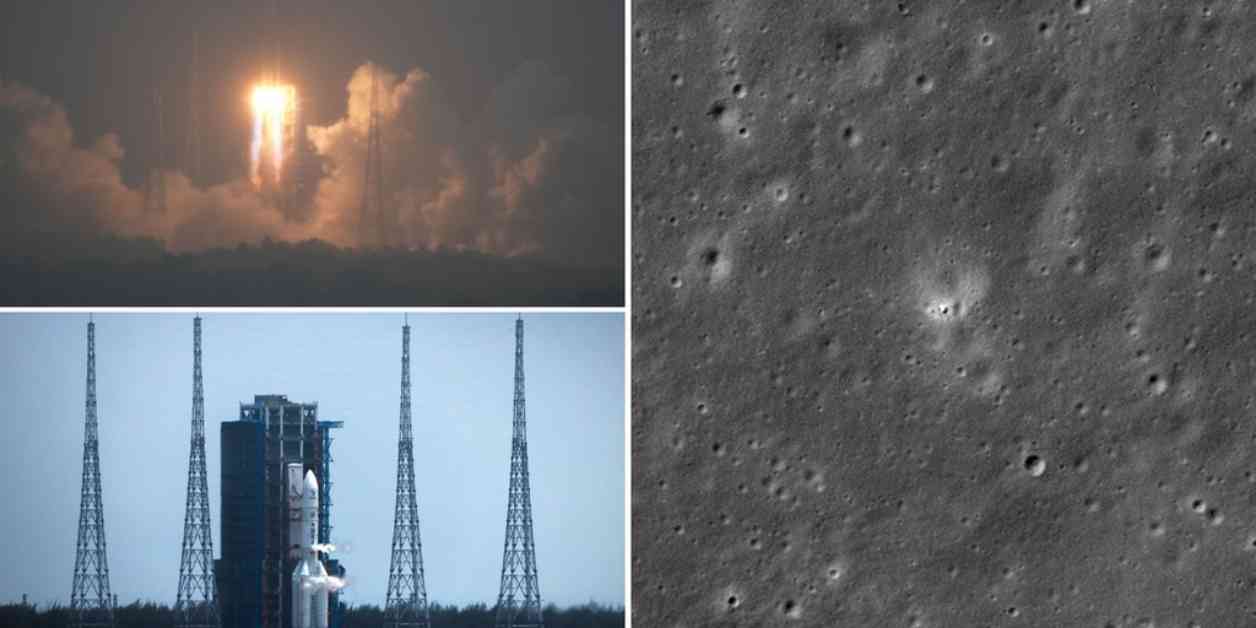NASA recently captured photos of China’s Chang’e-6 space probe on the far side of the moon. The Lunar Reconnaissance Orbiter Camera (LROC) took images of the sample return spacecraft on June 7, shortly after its landing on June 1. The LROC spotted the lander on the rim of a crater on the moon’s surface. The landing site coordinates were calculated to be approximately 42 degrees south latitude, 206 degrees east longitude, and at an elevation of about minus 3.27 miles.
The images released by NASA and Arizona State University show the Chang’e-6 probe situated near the southern edge of the Apollo basin on the lunar far side. The area where the probe landed was once covered by basaltic lava that erupted about 3.1 billion years ago. This flow of lava flowed downhill to the west, encountering various topographic features along the way.
China’s Chang’e-6 mission has been deemed a success, with the spacecraft unfurling China’s flag on the moon before collecting rock and soil samples. The samples were acquired using drilling and surface collection techniques before being stowed in a container inside the probe’s ascender as planned. The spacecraft is set to return to Earth with the samples, targeting a landing in China’s Inner Mongolia region around June 25.
This mission marks a significant milestone in lunar exploration history, showcasing China’s advancements in space technology. The Chang’e-6 probe is part of China’s broader moon exploration program, named after a Chinese moon goddess. China has been actively pursuing its space program to achieve milestones such as manned lunar missions, with aspirations to match and exceed the accomplishments of the United States in space exploration.
The successful landing and sample collection on the moon’s far side demonstrate China’s growing capabilities in space missions. As the nation continues to invest in its space program, it aims to become a leading player in space exploration, setting ambitious goals for lunar missions and beyond. China’s achievements in space technology are not only a source of national pride but also pave the way for future scientific discoveries and advancements in space exploration.
With plans for future missions to the moon and beyond, China is positioning itself as a key player in the global space race. By leveraging its technological expertise and resources, China is making significant strides in space exploration, pushing the boundaries of human knowledge and capabilities. As the country continues to expand its presence in space, the world watches with anticipation to see what new discoveries and achievements lie ahead.




